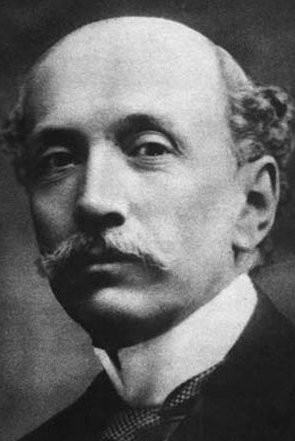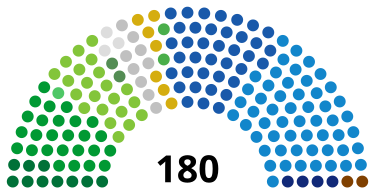
The 1923 Spanish general election was held on Sunday, 29 April and on Sunday, 13 May 1923, to elect the 19th Cortes of the Kingdom of Spain in the Restoration period. All 409 seats in the Congress of Deputies were up for election, as well as 180 of 360 seats in the Senate.

The 1920 Spanish general election was held on Sunday, 19 December 1920 and on Sunday, 2 January 1921, to elect the 19th Cortes of the Kingdom of Spain in the Restoration period. All 409 seats in the Congress of Deputies were up for election, as well as 180 of 360 seats in the Senate.

The 1918 Spanish general election was held on Sunday, 24 February and on Sunday, 10 March 1918, to elect the 17th Cortes of the Kingdom of Spain in the Restoration period. All 409 seats in the Congress of Deputies were up for election, as well as 180 of 360 seats in the Senate.

The 1916 Spanish general election was held on Sunday, 9 April and on Sunday, 23 April 1916, to elect the 16th Cortes of the Kingdom of Spain in the Restoration period. All 409 seats in the Congress of Deputies were up for election, as well as 180 of 360 seats in the Senate.

The 1914 Spanish general election was held on Sunday, 8 March and on Sunday, 22 March 1914, to elect the 15th Cortes of the Kingdom of Spain in the Restoration period. All 408 seats in the Congress of Deputies were up for election, as well as 180 of 360 seats in the Senate.

The 1910 Spanish general election was held on Sunday, 8 May and on Sunday, 22 May 1910, to elect the 14th Cortes of the Kingdom of Spain in the Restoration period. All 404 seats in the Congress of Deputies were up for election, as well as 180 of 360 seats in the Senate.

The 1907 Spanish general election was held on Sunday, 21 April and on Sunday, 5 May 1907, to elect the 13th Cortes of the Kingdom of Spain in the Restoration period. All 404 seats in the Congress of Deputies were up for election, as well as 180 of 360 seats in the Senate.

The 1905 Spanish general election was held on Sunday, 10 September and on Sunday, 24 September 1905, to elect the 12th Cortes of the Kingdom of Spain in the Restoration period. All 404 seats in the Congress of Deputies were up for election, as well as 180 of 360 seats in the Senate.

The 1903 Spanish general election was held on Sunday, 26 April and on Sunday, 10 May 1903, to elect the 11th Cortes of the Kingdom of Spain in the Restoration period. All 403 seats in the Congress of Deputies were up for election, as well as 180 of 360 seats in the Senate.

The 1901 Spanish general election was held on Sunday, 19 May and on Sunday, 2 June 1901, to elect the 10th Cortes of the Kingdom of Spain in the Restoration period. All 402 seats in the Congress of Deputies were up for election, as well as 180 of 360 seats in the Senate.

The 1899 Spanish general election was held on Sunday, 16 April and on Sunday, 30 April 1899, to elect the 9th Cortes of the Kingdom of Spain in the Restoration period. All 401 seats in the Congress of Deputies were up for election, as well as 180 of 360 seats in the Senate.

The 1898 Spanish general election was held on Sunday, 27 March and on Sunday, 10 April 1898, to elect the 8th Cortes of the Kingdom of Spain in the Restoration period. All 445 seats in the Congress of Deputies were up for election, as well as 180 of 360 seats in the Senate.

The 1896 Spanish general election was held on Sunday, 12 April and on Sunday, 26 April 1896, to elect the 7th Cortes of the Kingdom of Spain in the Restoration period. All 445 seats in the Congress of Deputies were up for election, as well as 180 of 360 seats in the Senate.

The 1893 Spanish general election was held on Sunday, 5 March and on Sunday, 19 March 1893, to elect the 6th Cortes of the Kingdom of Spain in the Restoration period. All 442 seats in the Congress of Deputies were up for election, as well as 180 of 360 seats in the Senate.

The 1891 Spanish general election was held on Sunday, 1 February and on Sunday, 15 February 1891, to elect the 5th Cortes of the Kingdom of Spain in the Restoration period. All 442 seats in the Congress of Deputies were up for election, as well as 180 of 360 seats in the Senate. Following a 1890 reform of the electoral law that saw a change from the previous censitary suffrage to a universal manhood suffrage, the electorate was extended to about 27.3% of the country's population.

The 1886 Spanish general election was held on Sunday, 4 April and on Sunday, 25 April 1886, to elect the 4th Cortes of the Kingdom of Spain in the Restoration period. All 434 seats in the Congress of Deputies were up for election, as well as 180 of 360 seats in the Senate. The electorate comprised about 4.6% of the country's population.

The 1884 Spanish general election was held on Sunday, 27 April and on Thursday, 8 May 1884, to elect the 3rd Cortes of the Kingdom of Spain in the Restoration period. All 433 seats in the Congress of Deputies were up for election, as well as 180 of 360 seats in the Senate.

The 1881 Spanish general election was held on Sunday, 21 August and on Friday, 2 September 1881, to elect the 2nd Restoration Cortes of the Kingdom of Spain. All 392 seats in the Congress of Deputies were up for election, as well as 180 of 360 seats in the Senate.

The 1879 Spanish general election was held on Sunday, 20 April and on Saturday, 3 May 1879, to elect the 1st Restoration Cortes of the Kingdom of Spain. All 392 seats in the Congress of Deputies were up for election, as well as 180 of 360 seats in the Senate.

The 1876 Spanish general election was held from Thursday, 20 January to Sunday, 23 January 1876 and from Tuesday, 1 February to Friday, 4 February 1876, to elect the Constituent Restoration Cortes of the Kingdom of Spain. All 406 seats in the Congress of Deputies were up for election, as well as all 196 seats in the Senate. In the Canary Islands the election was held from 28 to 31 January, and in Puerto Rico it was held from 15 to 18 February. On 5 April 1877, another election to the Senate was held.


















